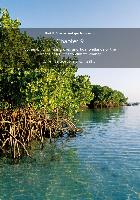Please use this identifier to cite or link to this item:
https://hdl.handle.net/11017/542

| Title: | Chapter 09: Vulnerability of mangroves and tidal wetlands of the Great Barrier Reef to climate change |
| Authors: | Lovelock, C.E. Ellison, J. Great Barrier Reef Marine Park Authority |
| metadata.dc.subject.asfa: | Climatic changes Coral reefs Ecosystem resilience Wetlands Mangroves Vulnerability |
| APAIS Subject: | Environmental management Conservation (Natural resources) Greenhouse effect |
| metadata.dc.subject.category: | Animals Plants Ecosystems Processes Economic values Social values Climate change Coastal communities |
| Year of publication: | 2007 |
| Publisher: | The Great Barrier Reef Marine Park Authority |
| Series/Report no.: | Book: Climate change and the Great Barrier Reef: a vulnerability assessment |
| Abstract: | Climate change will have an enormous influence on the intertidal wetlands of the Great Barrier Reef (GBR). Increases in atmospheric carbon dioxide (CO2) concentrations and associated increases in air and sea temperatures, rising sea level, changes in oceanic circulation, rainfall patterns and frequency and intensity of storms are highly likely to affect the physiology, ecology and ultimately the stability of wetland habitats. The intertidal position of mangroves, salt marshes and salt flats makes them particularly vulnerable to changes in sea level, although other climate change factors will also exert a strong influence on wetland communities. Past rises in sea level have led to increases in the area of mangroves in northern Australia. However, past climate change has occurred with limited human modification of the coast compared to current levels of development. Human activities have resulted in loss of wetlands, disruption to connectivity, enhanced availability of nutrients, changed sediment dynamics and the creation of structures that will prevent landward migration of wetlands with sea level rise (eg roads, berms, bunds and sea walls). Many of these human impacts will reduce the resilience of intertidal wetlands to climate change. To conserve the intertidal wetlands of the GBR and the ecosystem services they provide, we will need to manage the coastal zone in a way that enhances the resilience of mangroves, salt marshes and salt flats during climate change. |
| URI: | https://hdl.handle.net/11017/542 |
| ISBN: | 9781876945619 |
| Type of document: | Book section or chapter |
| Appears in Collections: | Effects |
Files in This Item:
| File | Description | Size | Format | |
|---|---|---|---|---|
| Chapter-9-Vulnerability-of-mangroves-and-tidal-wetlands-of-the-Great-Barrier-Reef-to-climate-change.pdf | 961.61 kB | Adobe PDF |  View/Open |
Items in ELibrary are protected by copyright, with all rights reserved, unless otherwise indicated.
